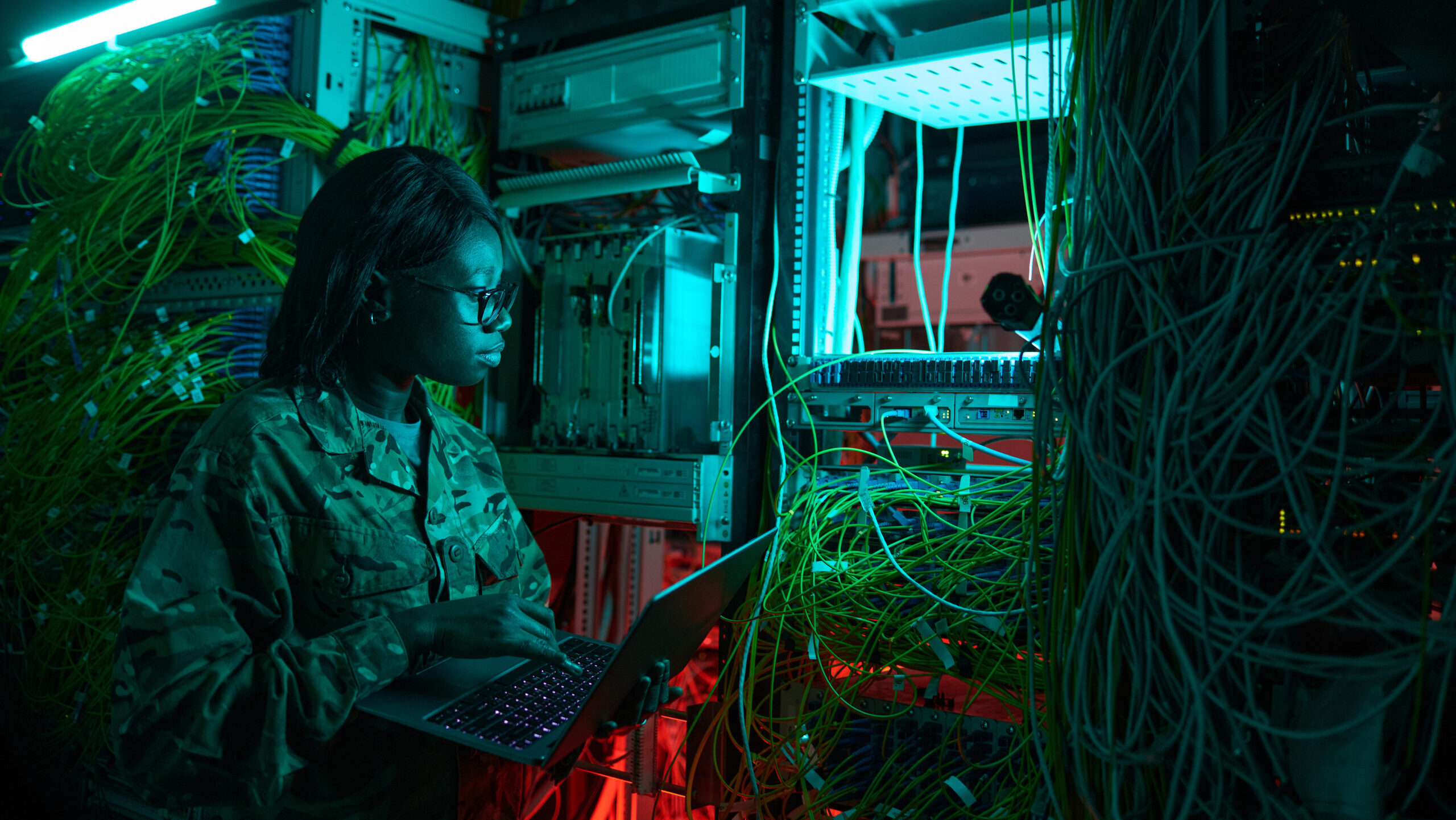
Concept art showing a member of the military working in a server room. (Getty Images/SeventyFour)
WASHINGTON — The past year laid the foundation for how the Pentagon and military services want to fight in the future, with less complex digital environments and more connectivity, all aided with the promise of emerging technologies.
To do just that, the Department of Defense is gearing up for a busy year ahead. These are some of the programs and shifts to watch in the next year:
[This article is one of many in a series in which Breaking Defense reporters look back on the most significant (and entertaining) news stories of 2023 and look forward to what 2024 may hold.]
Replicator
Under a new initiative dubbed Replicator, the Pentagon is aiming to counter China’s military mass by cranking out thousands of attritable autonomous systems within two years for the Indo-Pacific theater. The effort was announced in late August by Deputy Defense Secretary Kathleen Hicks, who said DoD will purposely remain “cagey” in terms of what it shares.
The first tranche of systems under the effort will be picked this month, but candidates likely won’t be publicly announced, Hicks said in November. Later that same month, Doug Beck, director of the Defense Innovation Unit, told reporters his office was working to understand what gaps exist that Replicator can fill. The first tranche of systems is expected to be ready to field between February and August of 2025.
But questions remain on how the Pentagon will tackle the ambitious initiative, particularly when it comes to how the effort is funded. Hicks said DoD isn’t looking for new money for the first tranche of drones, but the department may need dollars in fiscal 2025. Additionally, lawmakers on the Hill and analysts have raised questions about Replicator funding and implementation.
Given the short timeline for getting the first set of systems fielded under the effort, interest from the military services and many questions left unanswered on how exactly the program will be carried out, Replicator will be a key initiative to watch over the next year.
DIU ‘3.0’
This past year laid the foundation for a new era of the Defense Innovation Unit, starting with the appointment of its new director, Doug Beck, a former vice president at Apple. Along with the new hire, DIU was elevated to report directly to the secretary of defense instead of the undersecretary of defense for research and engineering.
Heading into 2024, all signs point to DIU taking a much bigger and embedded role within the Pentagon. Along with the more visible role across the department, another area to watch will be if the hub gets adequate funding
One of Beck’s main talking points since taking lead of the innovation hub has been how it’s at a “tipping point” and entering DIU “3.0,” which is less about proving the worth of new tech and more about how that tech will be scaled for broad use across the military. Delivering on a large scale will require DIU to shift to a model that begins from the demand signal from combatant commands and understand the operational gaps faced by warfighters.
DIU is also a key part in supporting Replicator, although its exact role within the initiative is still somewhat unclear. In an interview with Breaking Defense, Beck said DIU will help “set the agenda” for Replicator. He also chairs the Defense Innovation Working Group, which supports Replicator, and he told reporters in November that DIU was planning a tech summit early next year to increase industry engagement in the effort.
After historically existing as an office somewhat apart from DoD in its eight-year existence, DIU seems poised to be better connected through the department in the next year.
The Army’s Network Of The Future
The next year will prove whether the Army’s restructuring of its main offices this past year will begin to pay off. The organizational change within the service’s network portfolio came this past October when it had finished restructuring its main offices responsible for the development and acceleration of its enterprise and tactical network and cyber operations.
The goal was to streamline the service’s current set up, which included different network and cyber efforts spread across the program executive offices for command, control, communications-tactical, intelligence, electronic warfare and sensors and enterprise information systems. (And PEO aviation and PEO soldier could also be due for their own shakeup come next year.)
Another key effort to keep an eye on next year is Project Linchpin, the service’s first program of record to build out a trusted artificial intelligence and machine learning pipeline. The service wants to develop an AI/ML operations “environment” for intelligence, cyber and electronic warfare systems through the program.
There are also many programs in the electronic warfare and signals intelligence space to watch for, like a full deployment for the Electronic Warfare Planning and Management Tool and a down select to one vendor for the Tactical Intelligence Targeting Access Node, a tactical ground station that can process data across space and land-based sensors using artificial intelligence.
The service also just finalized its digital engineering strategy, which aims to lay the groundwork for how the service plans to speed the development of weapon systems and move to an all digital environment, and is part of a much broader digital transformation the Army is going through over the next several years.






















